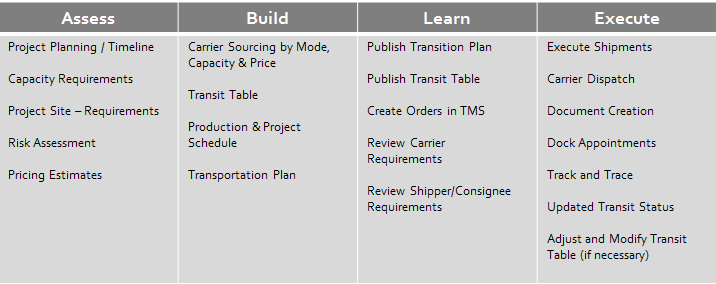Most shippers' freight operations fall into a regular pattern, with established capacity arrangements fitting into traditional containers or trailers along typical routes. But in some industries (and in some special circumstances), project cargo (or project freight) needs arise, meaning a shipment or shipments go above and beyond normal - most commonly due to size. Project cargo in other words refers to especially large, heavy, and awkwardly sized parts or equipment that is also usually quite expensive. In essence, it doesn't fit into standard shipping containers or trailers. Also falling under project freight can be items that are especially delicate or sensitive in nature requiring specialized accommodations for factors like temperature and fragility. And oftentimes these loads must travel to and/or from harder than average to reach locations like remote wind farms or oil fields. That means extensive planning, specialized transportation methods and of course, top notch care are needed to ensure project cargo gets from point A to point B on time and intact.
Examples of Project Cargo
Project cargo comes in many forms and across many types of industries. Some specific examples of project cargo include:
- Manufactured homes
- Aircraft engines
- Large boats/ships
- Weapons and other military equipment
- Oil, gas or chemical tanks
- Wind turbines
This is certainly an incomplete list. In some cases, project cargo may be a rare or one-off shipment for a company like a transformer to run a building's electrical system or a transfer of machinery to a new facility in a move. In others, certain industries deal with project cargo regularly, like:
- Renewable (and non-renewable) energy
- Construction/Engineering
- Power plants
- Military
- Aerospace
- Mining
Regardless of the type of project cargo, planning ahead is critical to ensure the right equipment capacity is available to handle the route in the time needed. There are many moving parts after all, so it pays to work with logistics professionals who know how to navigate every step - and plan for contingencies. For instance, working with InTek on a project cargo shipment like a move follows these steps (with visibility to the client through a state-of-the-art TMS):

If you need help with project cargo, reach out to us, and we'll use our expertise to find you the right, reliable option for you at the right price. For more information about freight and logistics - and what we do at InTek - visit our Resources page. Or you can start with a few of the links below:
